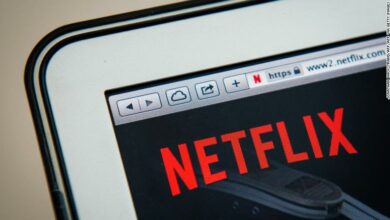
This piece was written for Egypt Independent’s final weekly print edition, which was banned from going to press. We offer you our 50th and final edition here.
How much do you know of the sensible nuances between Egypt’s coastlines? How much travel literature did you read about what kind of a tourist you would be if you were a Red Sea vacationer as opposed to a Mediterranean Sea visitor?
Where does the limit of our knowledge of these getaways lie? In many ways, the understanding can be found at the beach — or a few kilometers further and deeper where you can finally experience the wonders of underwater life.
But the beach is only the beginning of these uncharted human experiences, a home for which the high sea and, more precisely, underwater fiber-optic cables — are at their best, or so it would seem until they get cut.
This invisible infrastructure permits the voyages we make everyday, dozens of times, in the sea of the Internet, that virtual universe reconfiguring the act of tourism in multiple ways and interrogating the logic of seeking information.
Today, you travel every day in the sea of cyberspace. Look at the Earth as if you were above, or drive through using Google Street View.
When the Internet was created and became increasingly available for the masses in the 1990s, the rhetoric in the media and popular discourse often referred to its power to shorten geographic distances — the possibility to cross all boundaries and visit other worlds thanks to the marvels of technology. The illusion was that humanity was virtually connected, as if through magic.
The magic of the World Wide Web was also celebrated as a democratizing scientific advancement, capable of giving access to information “horizontally” to the people, without mediators controlled by hierarchical institutions appropriating the authority to distribute this information likened to travel agencies that package exotic experiences to mesmerize vacationers.
Yet with all the advances the Internet has brought, some of the technology still relies on the same infrastructure laid out 150 years ago.
And all the magic of the endless voyages the Internet promises disappears the moment the cable is cut.
Like the international waters they span, these cables are transnational. One cable cut troubles a whole continent.
One such cable, FLAG, short for Fiber-Optic Link Around the Globe, was laid in the mid-1990s to connect Europe, the Middle East and Asia. It begins in North America and ends up in Japan, and goes through a number of countries between the two, including Spain, Italy, Egypt and India.
These cables are symptomatic of how data travels, and paying attention to them has allowed us to reorient ourselves toward the material conditions — the physical infrastructure — of what we take for granted as a virtual world.
While being invisible and enigmatic to the tourist’s bare eye, this underwater infrastructure is a reflection, a literal undersea reflection, of the classical power dynamics in the pipeline of information. A case in point is presented by Neal Stephenson of Wired magazine, who in 1996 took on a legendary journey, traveling across the world following the laying of the longest cable on earth. During his stop in Egypt, he looked for the ruins of the Great Library of Alexandria.
“I didn’t know the exact route of SEA-ME-WE 3 and was intrigued to learn that it will be passing through the same building in Alexandria as SEA-ME-WE 1 and 2, which is also the same building that will be used by FLAG. Because this place, soon to be the most important data nexus on the planet, happens to be constructed virtually on top of the ruins of the Great Library of Alexandria.”
Further delineating the power dynamics of the fiber optic cable system, Stephenson wrote:
“… In a nicely Pharaonic touch, one of the six ducts going into the ground here is the sole property of President Hosni Mubarak, or (presumably) whoever succeeds him as head of state. It is hard to envision why a head of state would want or need his own private tube full of air running underneath the Sahara. The obvious guess is that the duct might be used to create a secure communications system, independent of the civilian and military systems (the Egyptian military will own one of the six ducts, and ARENTO will own three). This, in and of itself, says something about the relationship between the military and the government in Egypt. It is hardly surprising when you consider that Mubarak’s predecessor was murdered by the military during a parade.”
This possibility to access information about concealed experiences through alternative itineraries tells of a past present with us in these places, in one place that’s 2 inches thick and 28,000 kilometers long, and ties all continents in one go.
1929: Trans-Atlantic cables were cut following an earthquake near Newfoundland.
2005: The SEA-ME-WE 3 submarine cable was cut 35 kilometers south of Karachi.
2006: An earthquake near Hengchun rendered inoperable numerous cables between Taiwan and the Philippines that connect Hong Kong, Southeast Asia and China.
2007: Pirates stole an 11-kilometer cable that connected Thailand, Vietnam and Hong Kong.
2008: Two of the three Suez Canal cables, two cables in the Persian Gulf and one in Malaysia were cut in separate incidents.
2010: The SEA-ME-WE 4 submarine cable, which connects South East Asia and Europe, was reportedly cut in three places off Palermo, Italy.
2011: The Tohoku earthquake and tsunami damaged a number of undersea cables that land in Japan.
2012: The EASSy and TEAMS cables disconnected about half of the networks in Kenya and Uganda.
2013: The SEA-ME-WE-4 connection from France to Singapore was cut by divers in Egyptian waters.




